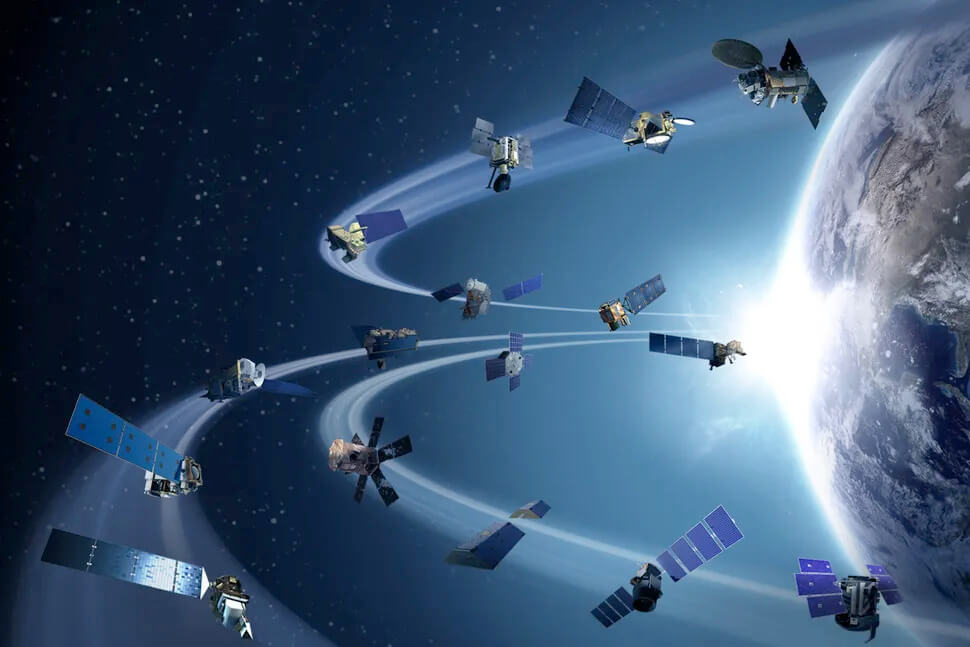On 19 November at COP30, AIM for Scale and the World Meteorological Organization (WMO) co-organized a panel discussion focused on the important interplay between global, regional, and national institutions in delivering timely, actionable weather and climate information to farmers.
The discussion brought together:
- Paul Winters, Executive Director, AIM for Scale (moderator)
- Ousmane Ndiaye, Director-General, ACMAD
- Albert Fischer, Director, WIGOS Division, WMO
- Qingfeng Zhang, Senior Director for Agriculture, Food, Nature, and Rural Development Office, ADB
- Ana Maria Loboguerrero, Director, Adaptive and Equitable Food Systems, Gates Foundation
- Maja Schling, Senior Economist, IDB
Speakers emphasized that strengthening climate services for agriculture requires collaboration across the entire climate information ecosystem-from the global scientific standards set by WMO, to the regional coordination provided by ACMAD, to country-level implementation led by government and supported by AIM for Scale. Multilateral development banks (MDBs) play a central role in financing and embedding these systems sustainably, while donor partners such as the Gates Foundation are unlocking new investments in AI-powered data, benchmarking for accuracy, and last-mile delivery approaches that can ensure millions of farmers benefit.
People-Centered Climate Services
A core theme throughout the session was that the effectiveness of climate services depends on understanding and responding to farmers' realities. Weather information only becomes valuable when it is:
- delivered at the right time,
- through the right channels,
- in the right formats,
- and aligned with the decisions farmers must make.
Speakers emphasized that messaging must be people-centered and grounded in human-centered design. The "last mile"-ensuring National Meteorological and Hydrological services (NMHSs) and agricultural extension systems can reach farmers with practical, local guidance-is where climate services succeed or fail. Trust is also essential: in many communities, weather understanding has been passed down for generations, and new tools take time-often multiple seasons-to gain acceptance. While emerging technologies such as artificial intelligence played a prominent role in the discussions, panelists underscored that technology on its own is insufficient. They stressed the importance of farmer engagement and co-production to ensure that services genuinely address farmers' decision-making needs and help build lasting confidence and partnerships.
Connecting Global Models to Local Realities
Panelists underscored that no single institution can deliver farmer-relevant climate services alone. Instead, impact emerges when each level of the system plays its role:
Global Level (WMO)
WMO provides the backbone for climate and weather services through its global standards for observation (WIGOS), its data-sharing infrastructure (WIS), and its global and regional data-processing system (WIPPS). These systems, along with WMO's scientific frameworks, support both traditional physics based forecasting and new AI-enabled tools. Close coordination with NMHSs ensures that programmes remain aligned with WMO priorities, m ember needs, and ongoing initiatives, particularly in advancing the use of climate services within the agriculture sector.
Regional Level (ACMAD)
ACMAD's role in harmonizing regional knowledge, fostering data sharing, and connecting NMHSs across Africa is critical for scaling best practices across borders. As WMO's designated Regional Climate Center for Africa, ACMAD serves as a key driver in advancing and supporting these collective efforts.
National Level (Governments with AIM for Scale Support)
In collaboration with partners like University of Chicago's Human-Center Forecasts Initiative and Precision Development, AIM for Scale works directly with governments to embed innovations-such as AI-powered weather services-into national programs, strengthen institutions, and help countries deliver tailored guidance to farmers.
Speakers agreed that embedding AI within government systems, not in parallel structures, is essential for long-term sustainability.
Investing in Accuracy, Delivery, and Evidence
The Gates Foundation highlighted three key investment areas shaping the next generation of climate services:
- AI-powered and inclusive data systems to improve the precision and accessibility of forecasts.
- Rigorous benchmarking to evaluate real-world model performance across East and West Africa and ensure tools reflect local conditions.
- Innovations in dissemination, including A/B testing across SMS, voice, apps, radio, and intermediaries to understand what actually drives farmer behavior.
Panelists emphasized that impact evaluation is non-negotiable. Understanding whether farmers are using information-and how it affects their decisions-allows institutions to refine delivery approaches and build evidence for scale.
Strengthening Institutions and Policies for Scalable, Sustainable Systems
Several speakers addressed a persistent barrier: fragmentation within government systems. Meteorological agencies, agriculture ministries, digital transformation units, and extension networks often work in parallel, leading to gaps in data flow and inconsistent messaging.
To overcome this, the panel highlighted the need for:
- Inter-ministerial coordination and shared standards
- Clear data-sharing policies across government agencies
- Consistent, reliable national forecasting systems and delivery infrastructure
- Capacity strengthening for meteorological and agricultural institutions
- Standardized forecasting methodologies to ensure consistent, actionable outputs
Better alignment among government actors is essential for scaling innovations to reach millions of farmers in an efficient and unified way.
Scaling What Works: A Shared Imperative
Across all institutions represented, there was consensus that scale matters. Reaching tens of thousands of farmers is not enough to meaningfully improve food security or climate resilience. AI-powered forecasts, integrated climate services, coproduction to ensure services respond to the real decision needs of farmers and innovative dissemination tools must reach millions-ideally hundreds of millions-to match the scale of the challenges ahead.
The COP30 discussion made clear that scaling is possible when:
- Global scientific leadership
- Regional coordination structures
- National government implementation mechanisms
- Sustainable financing from multilateral development banks
- And catalytic donor support
are aligned toward a common goal.
Looking Ahead
As climate risks intensify, the need for timely, accurate, farmer-centered climate services will only grow. WMO, ACMAD, and AIM for Scale are committed to advancing this work-together with governments, multilateral development banks, research institutions, and donors-to ensure that the world's farmers have the information they need to make informed decisions, adapt to a changing climate, and strengthen their livelihoods.
The path forward is clear: stronger coordination, smarter technology, more robust institutions, and a relentless focus on farmers. With these elements in place, climate services can move from isolated innovations to national programs capable of delivering impact at scale.






